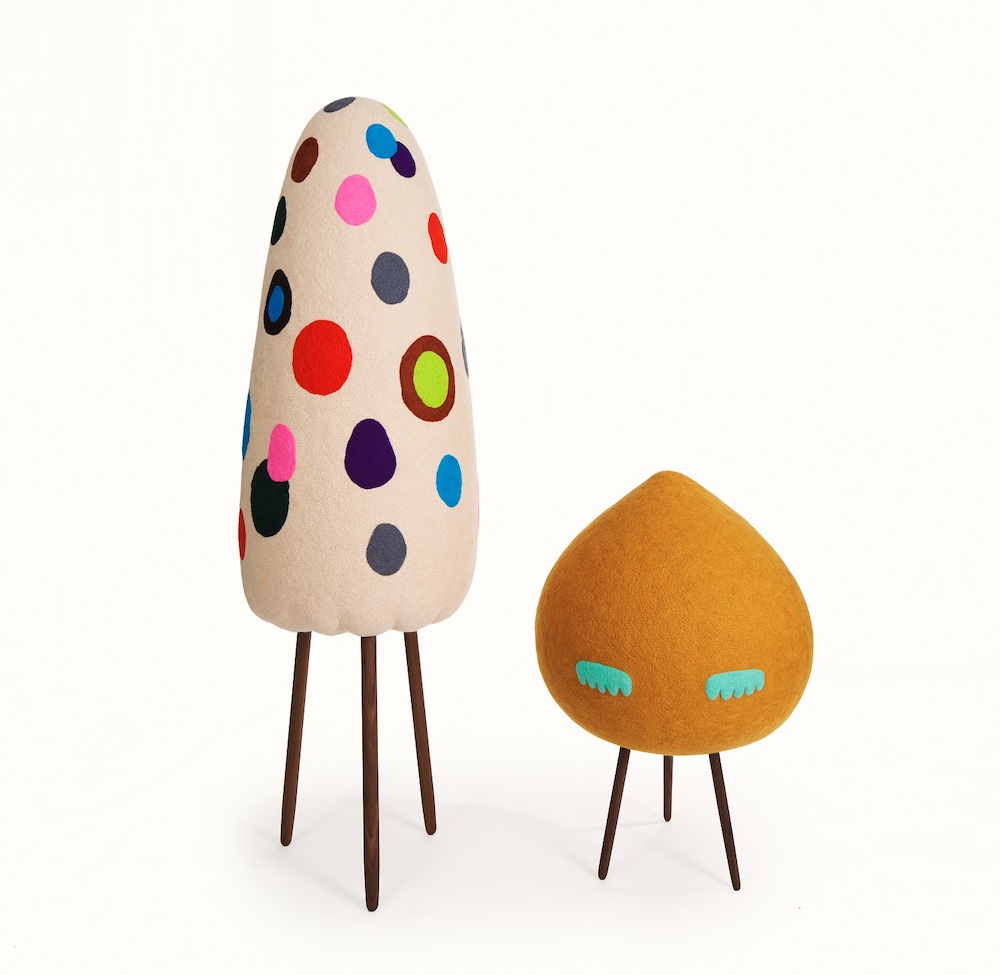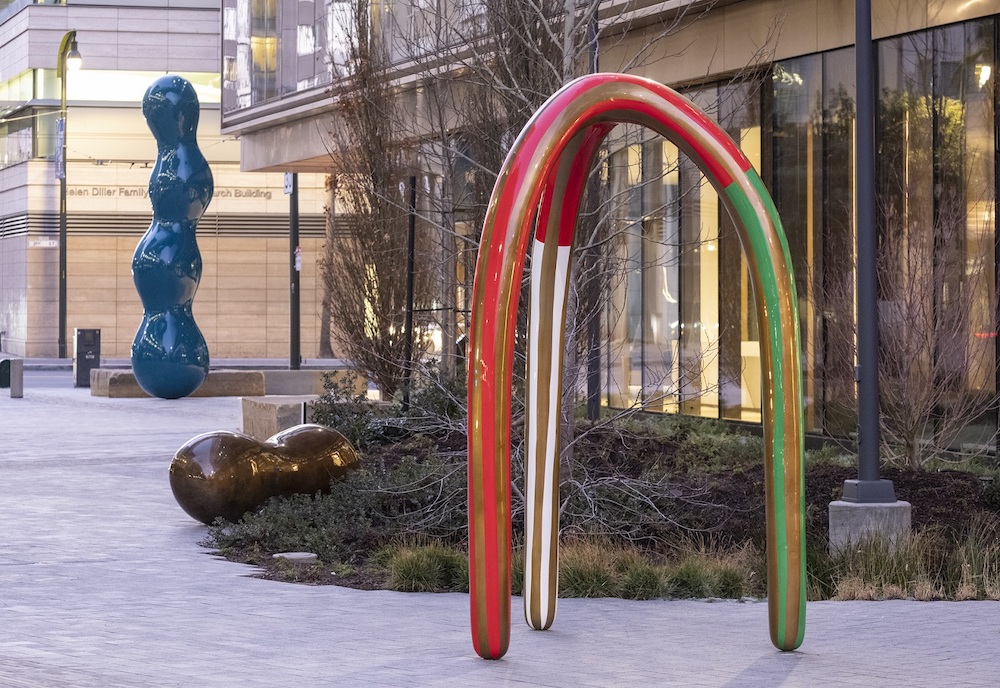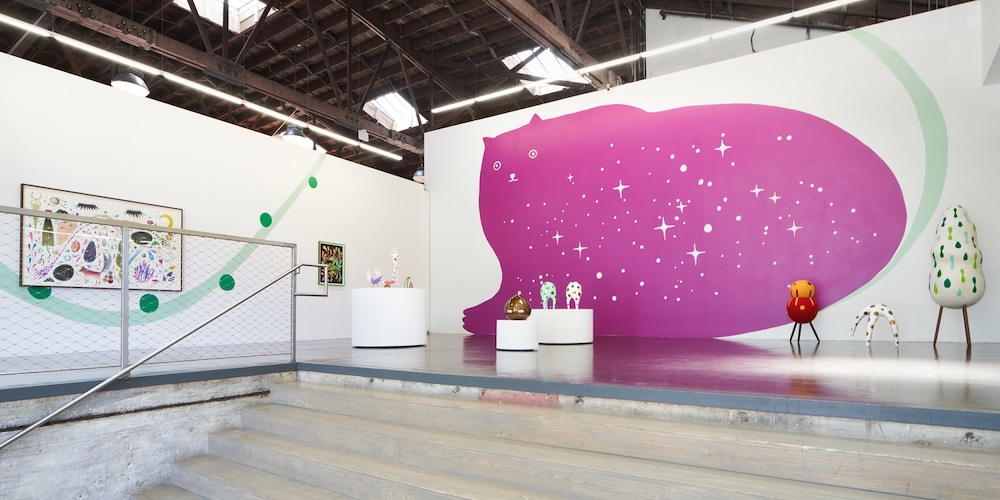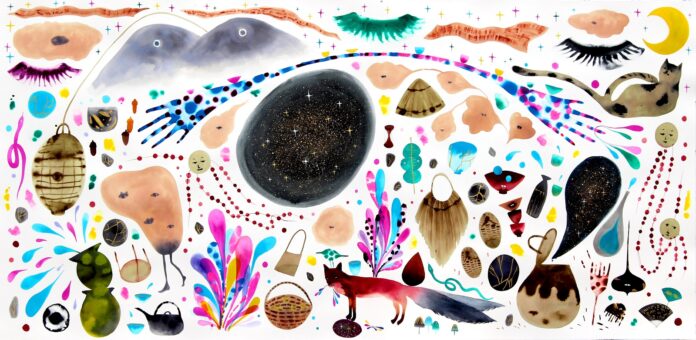Masako Miki has much to share with us about the inherently sacred nature in all things.
“It has become how I engage my life,” Miki told 48hills.
A need to find community is what initially lead her towards a playful yet diligent art practice. Now, after 30 years of creating, she thrives on a process that embraces curiosity and inquiry.
Miki grew up in Sakai City, an industrial Japanese seaport suburb of Osaka, an evolving area with a rich history of artisans and merchants. Influenced by her father’s travels as an antiques dealer/refurbisher, Miki left Japan after high school and came to San Francisco in 1992.
“As a child, I always wondered about places outside of Japan. I cherish my memories of listening to my father’s stories and looking at a globe together,” Miki said.

Miki grew into the idea of being an artist. She was always creative, and her parents found her an oil painting tutor when she was in the fifth grade. But when she came to California for college, it was to study public relations.
“I think I was depressed for the first few years because I had a difficult time communicating and felt isolated from everyone,” Miki said.
It was in a drawing class that she was able to make friends with other students by sharing work. The experience had a profound impact on Miki, and helped her to find her community. Changing her major to art, she completed both a BFA and MFA program.
Help us save local journalism!
Every tax-deductible donation helps us grow to cover the issues that mean the most to our community. Become a 48 Hills Hero and support the only daily progressive news source in the Bay Area.
“Art has been a communication tool from the very beginning,” she said. “There are so many interesting and caring people in creative communities, and I truly enjoy meeting and collaborating with them.”
During grad school, she encountered the writing of Roland Barthes, and semiology became a strong influence on her work, with his works Mythologies and Empire of Signs making the greatest impact on her ways of thinking. She describes having an epiphany of identity, and becoming more curious about Japanese culture than ever before.

“Barthes resonates with my work as I invent signifiers that carry the signified, particularly in flux,” she said. “The meaning continues to shift depending on when, who, and how it is going to be perceived.”
The literary theorist’s insights on how signs are used in relation to history, religion, and the natural environment—and how that translates based on context and individual perception—grabbed her.
“Meaning is open to the spectator,” Miki said. “Things have both denotation (literal meaning) and connotation (cultural meaning). There is fluid interpretation that illuminates a candid reflection on our values.”
As an artist, she invents and reinvents signifiers by referencing unique characters of yokai (shapeshifters) that appear in Japanese folklore inspired by Shinto animism. By introducing them in various media of drawing, sculpture, and installation, Miki creates new mythologies which reflect cultural identities.
Another influence is Yuval Noah Harari, the author of Sapiens: A Brief History of Humankind. Harari proposes that we emerged and thrived by investing in shared mythologies that allowed us to form communities and establish economic systems, religions, and nations.
“If enough people believe the same story, this becomes our reality,” Miki said, regarding this work. “Among our narratives, many fear-driven myths have been created to promote the deep chasm among us.”
In her West Berkeley studio, Miki’s process is organic, open, and unconditioned to materials and size. Her sculptures range from miniature to monumental, and incorporate both soft and hard materials from felted wool to bronze.
“I have a lot of colorful wool laying around and it’s fun to be surrounded by these fluffy materials,” she said. “The felting process is so time-consuming and physical and though this repetitive process is a big part of the work, I have a love-hate relationship with the endless hours. The reward comes at the end when the piece is completed.”
For balance, Miki works on large-scale mural drawings on paper, which offers great freedom from the gravity and structural aspects of her other processes. Enjoying the fluidity of watercolor and ink, Miki manipulates both accidental and controlled mark-making practices in unencumbered exploration.
Her installations are often site-specific, with public art projects that have introduced her to new materials like bronze, stainless steel, glass fiber reinforced concrete (GFRC), and collaboration with foundries and a 3D modeling artist.
Miki’s shapeshifter characters are translated as ghosts, deities, or preternatural creatures, recontextualized into contemporary time. Fluid and non-binary in nature, they exist as a hybrid of sacred and secular, animate and inanimate, rendering them boundless and independent.
“Their characteristics resonate with my own bicultural identities,” she shared. “Being released from selecting only one, I can celebrate dual, dichotomous cultural influences. In our non-binary society where multiculturalism, gender fluidity, and bi-racial identity seem to be more the norm, our identities have become more complex.”

Shapeshifters also veer from an anthropocentric perspective of the universe. In Shinto, everything in the universe is sacred, as spirituality exists within materiality. Nothing is considered insignificant, even a mundane object like a simple tool is imbued with spirit.
“This is rooted in the concept of Yaoyorozu no kami, which literally translates to Eight Million Gods,” Miki said. “They can only fulfill their duties as a collective, and meaningful deed can only be achieved by collaboration, not by one.”
A kind of ethnology is the result of her curiosity on the topic. She is intrigued by the idiosyncrasies of each culture while recognizing the strange universality that runs through them all. Miki is curious about why we have created mythologies that continue to exist for centuries, and how narratives seemingly meant to be entertainment can offer deep knowledge about our history, systems, and evolutions.
Miki says that recent and current events have pushed our unresolved social issues to the surface. The examples of the COVID pandemic, the violences that led to the formulation of Black Lives Matter, war in Ukraine, and Asian hate crimes call into question the economic disparities which cause real suffering.
“One thing I experienced during the pandemic was that we desperately seek to connect to each other,” Miki said. “We are learning to adapt to new ways of doing so in an unpredictable world and the need to be flexible in an ever-shifting current.”
Miki is prepping a new studio in West Berkeley, which will be the largest studio she’s ever had at 1700 square feet, and will allow for separate drawing and sculpture spaces, and an installation area.
Now approaching 50 years old, Miki has clearly found her identity as an exhibiting artist. She is preparing for two solo exhibitions in spring 2023, one at Ryan Lee Gallery in New York, and another at the Kentucky Museum of Art and Craft in Louisville.
Locally, Miki is represented by Cult Aimee Friberg Exhibitions in San Francisco. She is contributing functional sculpture to the Minna Natoma Art Corridor Project, a unique pedestrian destination. Miki installed nine bronze pieces for the Uber HQ public art project last year, adding four new pieces more recently. She has also been invited to the Façade Project at the Institute of Contemporary Art San Jose, which runs through September 18 of next year.
Internationally, she is included in the “Certeza” exhibition at Colección SOLO in Madrid, through December. In 2023, Miki will be included in a group exhibition of Japanese artists at the Nassima Landau Foundation in Tel Aviv.
Miki invites her audience to become part of the dialogue and collaboration. In the meantime, she recommends listening to shapeshifters around you. They are always whispering.
For more information, visit her website at masakomiki.com and on Instagram.





